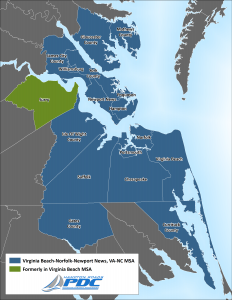by Catherine Franceski
Have you ever thought about how unique college dormitory community living is? And no, I don’t mean to conjure up memories of messy roommates, or those funky things called “shower shoes.” To me, the community that creates the dorm building is unique and unreplicable in that all types of people, of all races and identities, are living in such close proximity that tends not to happen too often in other residential communities and neighborhoods. I know that personally my neighborhood back home is somewhat diverse, but not to the extent that college campus dorm living is. Unfortunately, the legacy of racism and segregation has endured into many neighborhoods and communities in the US, and especially so in Richmond, Virginia.
Although Richmond had been residentially segregated since the end of slavery, in the early 1900s the Richmond City Council began codifying racial segregation into law. Although some of these laws were struck down by the Supreme Court, clandestine laws with different, more allowable stated purposes other than segregation continued to rule the land. For example, during this time, people whom the state prohibited from marrying could not live next to each other, and at the time, Virginia prohibited marriage between black and white residents. (Campbell, Richmond’s Unhealed History, 143).
Other tactics such as “redlining” continued to keep areas racially segregated. “Redlining” consisted of assigning a grade to different neighborhoods. One of the factors used to assign this grade was race. This made it harder to acquire credit for mortgages in these areas, further contributing to the segregation problem. These wrongdoings only began to be corrected in 1971 when a non-profit organization, Housing Opportunities Made Equal (HOME) of Virginia, began challenging segregated sale and rental properties (143). Structural racism in housing has constructed the geography of metropolitan Richmond, the effects of which are concerningly enduring.
From UR’s One Book, One Richmond’s book of the year, Evicted: Poverty and Profit in the American City, I had been aware of the racial discrimination and segregation in real estate that occurs all over the US. Although this particular book focuses on several housing segregation issues intertwined with race in Milwaukee, the book also addresses other factors such as gender, domestic violence, socioeconomic status, drug abuse, sexual violence, and educational opportunities which also play a part in keeping residential areas racially segregated. This problem is not isolated to specific cities or specific institutions, but rather covers a large amount of area because of its intersectional nature. Segregation in housing is not only because of race, but also, for example, because of socioeconomic strata that have separated different groups of people for decades. When former enslaved persons were emancipated, they could not afford housing amongst white people, if they could potentially afford housing at all. Today, people of color own homes at a staggeringly lower rates than white people. In 2014 in Virginia, 72.7% of white people were homeowners compared to 48.8% of people of color. Housing is a symptom of broader issues such as racial and economic inequality.
Although some of the issues listed above prevent people from attending the University of Richmond in the first place, the university does attempt to get students from a broad array of backgrounds to contribute to a diverse community, including in dormitory living. Although students may begin to self-segregate as sophomores and upperclassmen because more choose to select their roommates than did as freshman, I personally have not noticed this trend emerging. Perhaps the assorted living-learning communities available to sophomores allow for the continued integration of diverse students in residential dormitories beyond freshman year. So, next year when I’m thinking about how much more comfortable my bed is at home and how I wish I was there, I may pause for a second to think about what an unreplicable experience dorm living really is.
Catherine Franceski is a rising sophomore at the University of Richmond majoring in Philosophy, Politics, Economics & Law. She is working on the Race and Racism Project in partnership with Untold RVA during Summer 2017 as an A&S Summer Fellow.

